Comprehensive Guide to Effective Termite Treatments

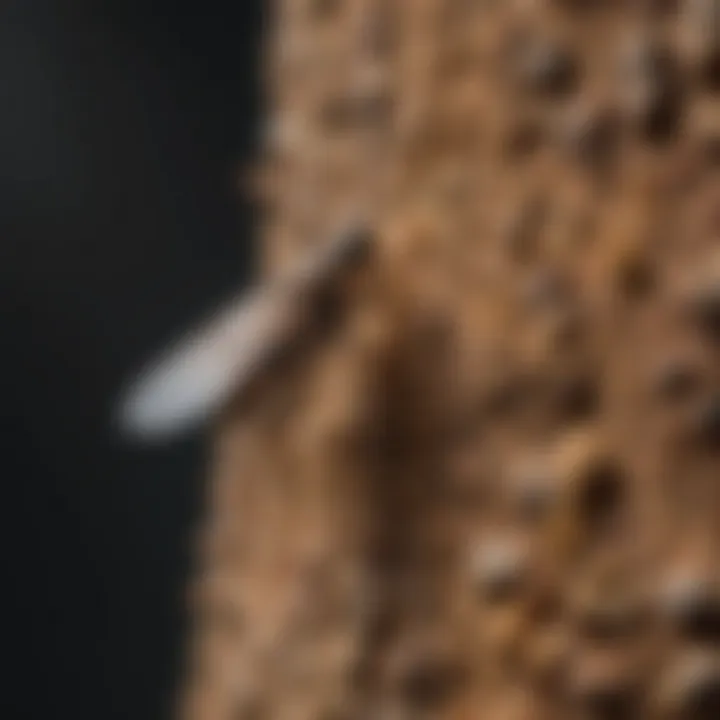
Understanding Pests
Termites are a specific kind of pests that can pose great risk to homes. They digest cellulose, which is a main component of wood. Knowing what these pests are can help in managing them effectively.
Termites live in colonies. The size can vary from a few hundred to several million individuals. There are several types of termites, including subterranean, drywood, and dampwood. Understanding these types is important because each behaves differently and requires unique approaches for treatment.
Identifying pests, like termites, is a crucial first step towards effective treatments. Many homeowners might not recognize an infestation until serious damage has occurred. This often leads to costly repairs and extensive treatments. By understanding the signs of termite activity early, homeowners can act quickly to address the problem.
Importance of Pest Identification
Identifying the specific type of pest is more than just curiosity. It directly affects the approach taken for treatment. For instance, subterranean termites usually require soil treatment, while drywood termites might benefit from localized treatment.
Rapid identification can help minimize damages. Some signs of termite infestation includes:
- Mud tubes on walls
- Swarmers or discarded wings around windows
- Hollow-sounding wood
- Small piles of sawdust
If any of these signs are present, it is advisable to consult a pest control professional immediately.
Prevention Techniques
Preventing termite infestations before they start saves time and money. By taking proactive measures, homeowners can significantly reduce the risk of termite damage.
Home and Garden Preventative Measures
A thorough inspection of the home and yard is the first step. Here are some important preventive actions:
- Keep all wood at least 6 inches off the ground.
- Seal any cracks in the foundation and walls.
- Check the roof and gutters for water damage.
- Store firewood away from the house.
These practices create barriers that are less inviting to termite colonies.
Seasonal Prevention Tips
Certain times of the year can increase the risk of termite infestations. Here are seasonal tips to consider:
- Spring: Inspect foundations as termites tend to swarm during warm months.
- Summer: Regularly check wooden structures for moisture.
- Autumn: Clean gutters to prevent water accumulation.
Regular maintenance throughout the year can help detect any risk before it becomes an urgent issue.
Eco-Friendly Pest Control Solutions
There is an increasing demand for sustainable pest control methods, especially regarding termites. Eco-friendly solutions can be effective and lessen the impact on the environment.
Overview of Sustainable Practices
Using eco-friendly barriers, like physical barriers, can keep termites at bay. Additionally, chemical treatments can be less toxic than traditional options. Homeowners should seek products that are certified organic or have minimal environmental impact.
Natural Remedies and Their Effectiveness
Natural treatments may not fully eliminate an infestation, but they can deter termites:
- Boric acid is considered a natural pesticide. It is applied to wood and can help kill termites.
- Orange oil is another option. Its effectiveness depends on concentrated formulations.
- Nematodes, microscopic worms, can also be utilized. They target termites without harming pets or humans.
These natural alternatives may have their limitations, but they contribute positively to a holistic approach to pest management.
Eco-friendly solution can provide effective termite management while being kind to the planet.
Understanding Termites
Understanding termites is crucial to managing infestations effectively. The insights into their biology and behavior can help homeowners detect early signs of termite activity, which is essential for prompt action. Moreover, recognizing the economic consequences of termite damage can reinforce the importance of preventive measures.
Biology and Behavior of Termites
Termites are social insects, living in colonies that can vary from a few hundred to several million members. They have a complex societal structure consisting of workers, soldiers, and reproductive individuals. Each group has a distinct role within the colony. The workers build the nest, forage for food, and care for the young, while soldiers defend the colony against threats.
Termites primarily consume cellulose, which is found in wood, paper, and other plant materials. This makes wooden structures especially vulnerable to infestations. The consumption of cellulose is facilitated by symbiotic microorganisms in the termites' guts that help break down the tough plant fibers.
Their behaviors include construction of mud tubes, which serve as protective tunnels leading to food sources. These mud tubes are a telltale sign of an infestation. Additionally, termites are attracted to moisture, so damp wood or areas with poor drainage may become hot spots for colonization.
Economic Impact of Termite Infestations
The economic ramifications of termite infestations can be significant. In the United States alone, it is estimated that homeowners spend approximately $5 billion annually on termite control and repairs due to damage. This figure underscores the importance of prevention and early detection.
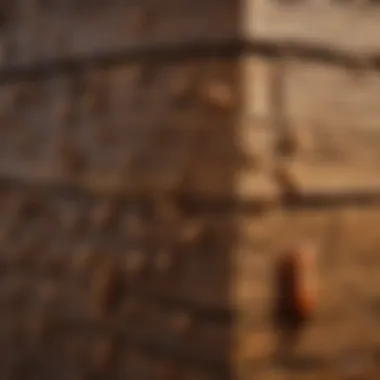

Termite damage is often not covered by homeowners' insurance policies. Therefore, the costs associated with repairing infested structures can fall entirely on the owners. Old wooden structures are particularly vulnerable, but new homes are also at risk if not adequately protected.
In addition to repair costs, the time and effort required to mitigate termite damage can be substantial. Homeowners often find themselves dealing with stress and unexpected financial burdens. Therefore, understanding termite biology and their economic impact is fundamental for effective home management and prevention strategies.
Types of Termite Species
Understanding the different types of termite species is essential for effective management and treatment of infestations. Each species has unique behaviors, habitats, and diets, which influence the strategies needed to control them. Recognizing these distinctions allows homeowners to make informed decisions on pest control methods. Moreover, knowledge of termite species helps in developing prevention strategies tailored to the specific risks associated with their presence.
Subterranean Termites
Subterranean termites are among the most destructive species. They live in soil and build extensive networks of tunnels underground. Their existence is often unnoticed until significant damage occurs. The Eastern subterranean termite is particularly common in the United States. They are attracted to wood, which they primarily feed on. The presence of moisture increases their likelihood to infest a structure, as they thrive in damp environments.
Signs of a subterranean termite infestation include mud tubes, which serve as protective passages from the soil to the wood. These tubes prevent them from drying out in open air. Homeowners should check for these structures, primarily around foundation walls, wooden structures, and crawl spaces. Treatment often involves liquid termiticides or baiting systems designed to eliminate colonies.
Drywood Termites
Drywood termites differ significantly from their subterranean relatives. They do not require contact with soil, which allows them to inhabit any wooden structure. The Western drywood termite is a common example. Drywood termites create galleries within the wood, leading to a hollow sound when tapped. This species also leaves behind small fecal pellets that accumulate below infested wood.
Because they infest dry wood, they are often found in attics, furniture, and hardwood floors. The treatment of drywood termites often requires fumigation, as localized treatments can be ineffective. Homeowners should be conscious of signs such as frass, which indicates an active infestation.
Dampwood Termites
Dampwood termites, like the Pacific dampwood termite, prefer moist wood, making them less of a threat to homes than other species. They typically thrive in decaying wood or the wood of living trees. Their presence usually indicates water damage or high humidity in the area. Recognizing dampwood termites is crucial as their colonization often relates to underlying moisture issues that may need to be addressed.
Signs of dampwood termites include heavy, damaged wood and the presence of larvae. Treatment options focus on reducing moisture levels in affected areas and replacing damaged wood. In addition, species identification helps prioritize the elimination of potential breeding grounds.
Understanding the species of termites is key to effective infestation management. Informed decisions on treatment options can significantly reduce the impact of these pests.
Identifying a Termite Infestation
Recognizing a termite infestation is critical for timely intervention. Early detection can save homeowners significant repair costs and prevent extensive property damage. Understanding how to identify these unwelcome pests helps in taking proactive steps before an infestation worsens.
Signs of Infestation
Identifying signs of termite activity is the first line of defense. Homeowners should be vigilant for various indicators, such as:
- Mud tubes: These pencil-sized structures made from soil, wood, and termite saliva usually run along walls or foundations, providing shelter for termites.
- Wood damage: Termites consume wood from the inside out, leaving a thin veneer intact. Tapping on wooden structures can reveal hollow sounds, indicating possible damage.
- Swarmers: Winged termites often leave the colony in spring to reproduce. Finding discarded wings around windows or doors suggests a nearby colony.
- Frass: Termite droppings are similar to wood shavings. If you observe small piles of frass near wood structures, this could be a sign of activity.
These signs can vary based on the species of termite, so recognition is essential.
Inspection Techniques
Conducting a thorough inspection is paramount in identifying termite infestations. Homeowners should adopt a systematic approach:
- Visual Inspection: Carefully examine the exterior and interior of your home, focusing on wooden structures, walls, and basements. Use a flashlight to look for mud tubes and damaged wood.
- Moisture Check: Since termites are attracted to moisture, inspect areas with standing water or leaks. This can include pipe connections, roofs, and gutters.
- Professional Assessment: Although you can conduct initial checks, consulting a pest control specialist is beneficial. They have the tools and experience to identify infestations that may not be visible.
- Monitoring Stations: Some homeowners set up monitoring stations around their property. These devices can help detect termite activity early.
Regular inspections are crucial. Ignoring signs of infestation can lead to significant structural damage over time.
Identifying a termite infestation not only involves understanding the signs but also knowing how to inspect thoroughly. Proactive measures and awareness could prevent these pests from causing irreversible damage to homes.
Treatment Options for Termites
Addressing termite infestations requires understanding the available treatment options and recognizing their significance within a comprehensive pest management strategy. Effective termite treatments not only help eliminate existing infestations but also prevent future occurrences. Homeowners must evaluate different approaches based on effectiveness, ease of application, environmental impact, and cost.
Liquid Termiticides
Liquid termiticides are one of the most common methods used for termite control. These chemicals create a barrier in the soil or wood, preventing termites from reaching structures. They are categorized into two main types: repellents and non-repellents. Repellent termiticides act as a barrier that termites will avoid, while non-repellent types are absorbed by termites, ultimately leading to their death.
The application method is another crucial aspect. Professionals usually inject liquid termiticides into the soil around a property’s foundation or directly into infested wood. This ensures a thorough barrier and maximizes effectiveness. Homeowners must be cautious and consult experts to select the right product. Environmental safety is also an important consideration; thus, using low-toxicity formulations can be beneficial when available.
Baiting Systems
Baiting systems are an alternative approach that target the social structure of termites. Unlike traditional methods, baiting involves placing bait stations around the property. These stations contain a slow-acting insecticide that workers carry back to the colony, eventually killing the queen and other members.
This method is less invasive than liquid treatments and can be monitored over time. Homeowners should regularly check and replace baits to ensure effectiveness. Baiting systems are particularly beneficial in environments where liquid termiticides may pose more risk to surrounding plants or wildlife. However, patience is required since it may take several weeks to see significant changes in termite activity.
Fumigation
Fumigation is a more intensive treatment commonly employed for severe infestations, especially in wooden structures. The process involves sealing the entire structure and introducing a gaseous pesticide that permeates all areas, including hard-to-reach spaces.
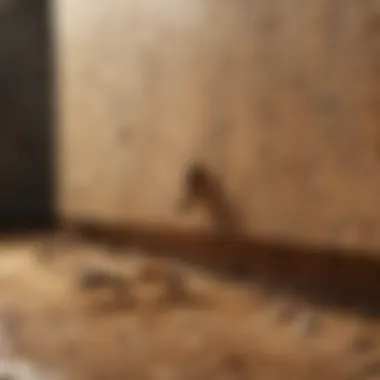
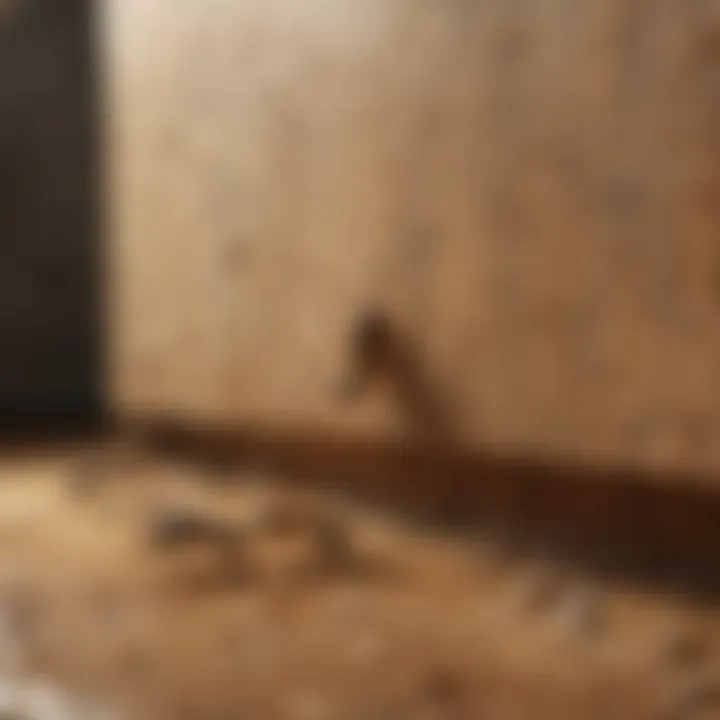
This method is highly effective for drywood termites and can eliminate entire colonies without damaging the foundation. The disadvantage is that it requires vacating the home for several days and extensive safety protocols. Homeowners should ensure they are working with licensed professionals who can guarantee a secure fumigation process. Post-fumigation, regular monitoring and preventive measures are advised to reduce the risk of recurrence.
Nematicides and Biological Controls
In the realm of eco-friendly options, nematicides and biological controls present a sustainable approach to termite management. Nematicides are specific chemicals that target nematodes, tiny worms that are natural predators of termites. Introducing these organisms to the soil can help control termite populations without harsh chemicals.
Moreover, biological control involves utilizing natural enemies, such as certain fungi or bacteria, to undermine termite colonies. This approach appeals to environmentally conscious homeowners. While these methods may require more time to achieve results compared to chemical treatments, they contribute positively to ecosystem balance and sustainability.
Adopting proper treatment strategies is crucial in managing termite threats effectively. By understanding available options, homeowners can make informed decisions that best fit their circumstances, preserving the structure of their homes against these destructive pests.
Eco-Friendly Pest Management Strategies
Understanding Eco-Friendly Solutions
In recent years, the focus on eco-friendly pest management has gained significant attention. Homeowners are increasingly aware of the potential harmful effects of conventional pest control methods on the environment and human health. Therefore, exploring eco-friendly solutions becomes essential in effective termite management.
Eco-friendly treatments often leverage natural ingredients, which reduces the risks associated with synthetic chemicals. For instance, products containing orange oil or diatomaceous earth can target termite infestations while minimizing ecological footprints. Additionally, these solutions can offer long-lasting results, as many natural ingredients continue to act against pests for extended periods.
It is important to notice that relying only on eco-friendly solutions requires correct understanding and application. Assessing the severity of infestations is crucial. If the infestation is significant, the application of natural methods alone may not suffice. Thus, integrating eco-friendly solutions with other approaches is often beneficial. This leads into a discussion about the integrative pest management approach.
Integrative Pest Management Approach
Integrative Pest Management, often referred to as IPM, is a comprehensive strategy that combines multiple methods for effective termite control while minimizing impacts on the environment. This approach focuses on long-term prevention and control, rather than merely addressing the immediate issue.
Key components of IPM include:
- Monitoring: Regular inspections help homeowners detect early signs of termite activity. This can avoid serious damage and higher repair costs in the future.
- Prevention: Simple measures, such as reducing moisture around the home or sealing entry points, can significantly lower the risk of infestations.
- Chemical Treatments: When necessary, integrating natural and chemical treatments can offer a balanced approach. The use of low-risk pesticides in combination with organic methods can achieve effective results.
- Education: Homeowners learning more about termite behavior and habits can empower them to make informed decisions.
"Successful pest management requires understanding the lifecycle of your pests and implementing strategies tailored to your home environment."
By adopting IPM, homeowners can achieve a termite management solution that not only addresses pest issues but also respects the surrounding ecosystem. This method emphasizes the importance of fostering healthy environments while effectively controlling termite populations.
Preventive Measures Against Termites
Preventive measures against termites are essential in safeguarding homes from potential infestations. By understanding the necessary actions and strategies to take, homeowners can significantly reduce the risk of these pests. This section outlines both physical barriers and environmental controls, key components that serve to fortify living spaces against termite invasion.
Physical Barriers
Physical barriers are crucial in termite prevention, providing a protective layer that restricts access to the home. These barriers can take several forms, most notably:
- Concrete Foundations: A solid, properly constructed concrete foundation stands as the first line of defense. It must be free of cracks and openings, as even the smallest gaps can allow termites entry.
- Steel Mesh and Screens: Installing steel mesh or screens can block termites from accessing the foundation. This solution is particularly effective when combined with other methods, creating a comprehensive barrier.
- Termite Resistant Materials: Using materials specifically designed to resist termites can be beneficial. Examples include treated wood, which has been chemically treated to deter termites, and higher-density products like steel or certain plastics.
Physical barriers require maintenance and regular checks. It is advised to routinely inspect these protective measures for signs of wear or damage. If any issues are found, addressing them promptly is critical to ensure that the barriers remain effective.
Environmental Controls
Environmental controls play a significant role in Creating an inhospitable environment for termites. These involve managing moisture levels and modifying landscaping around the home to deter infestation.
Key strategies include:
- Moisture Management: Termites thrive in moist environments. To prevent conditions that attract them, gutters should be cleaned regularly, and downspouts directed away from the foundation. Using proper grading to ensure water drains away from the home can also assist in controlling moisture levels.
- Landscaping Practices: Homeowners should pay close attention to their yards. Keeping mulch away from the home and ensuring that wood piles are stored at least 20 feet away from the foundation reduces attractants. Additionally, maintaining a clear zone of at least 12 inches around the house where vegetation is removed can help.
- Regular Inspections: Routine inspections of the home’s perimeter can identify potential risks before they escalate. Checking for any signs of moisture, rot, or alterations in the environment near the foundation can prove valuable.
Effective preventative measures can safeguard homes from the threat of termites. A proactive approach leads to long-term protection and peace of mind.
By incorporating both physical barriers and environmental controls, homeowners can significantly diminish the risk of termite infestations. These strategies require thoughtful planning and regular upkeep, but the benefits of a termite-free home make them a worthy investment.
Professional Pest Control Services
In dealing with termite infestations, understanding the role of professional pest control services is crucial. Homeowners often face challenges when attempting to manage termite issues on their own. Therefore, opting for specialized pest control can yield significant benefits. These services not only provide expert knowledge but also access to advanced treatment options that might not be available to the average consumer.
A professional exterminator possesses a deep understanding of termite biology and behavior. This expertise allows them to identify the most effective treatment methods tailored to specific species of termites. Additionally, pest control services offer extensive inspections to ensure no areas are overlooked. This thoroughness greatly increases the chances of successful eradication and minimizes potential future infestations.
The following points highlight the essential aspects of hiring a pest control service:
- Expertise: Trained professionals understand the complexities of termite control.
- Comprehensive Solutions: Services typically encompass assessment, treatment, and follow-up actions.
- Safety: Professionals know how to correctly apply chemicals, reducing risks to property and pets.
"Employing a pest control service is one of the most effective ways to ensure a termite-free home. The investment often pays off in the long run."
Hiring a professional pest control service can save homeowners from the ongoing stress and financial burden associated with pest management. The decision to seek expert assistance is pivotal in achieving a termite-free environment.
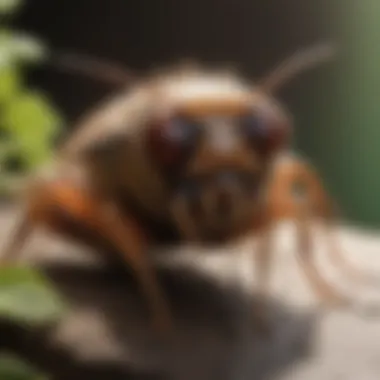
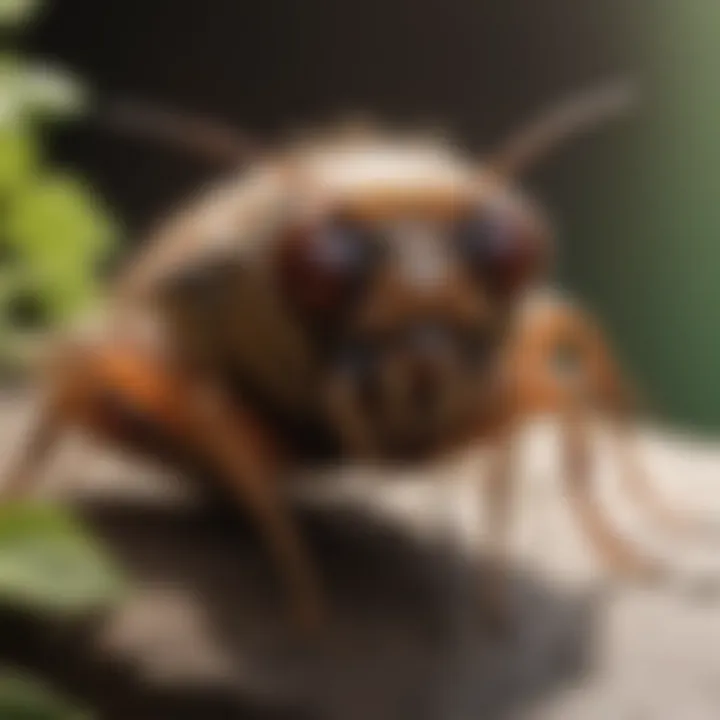
Choosing a Pest Control Company
Selecting the right pest control company can feel daunting. However, a systematic approach can assist in making this important decision. Homeowners should look for companies that demonstrate reliability, competence, and a strong customer service record. When researching potential companies, consider the following factors:
- Certification and Licensing: Ensure the company is licensed to operate in your area.
- Experience: Look for companies with a solid track record in termite management.
- Insurance: Professional services should carry liability insurance to protect your property.
- Reviews and References: Customer feedback can provide insights into the service quality.
It's also advisable to interview multiple pest control companies, allowing homeowners to compare service offerings and prices. Understanding the proposed treatment methods and the company’s approach to follow-up is essential for informed decisions.
Understanding Service Options
Professionals provide various services to handle termite infestations effectively. Here are some common options:
- Inspections: Comprehensive assessments to identify current infestations and potential risks.
- Liquid Treatments: Application of liquid termiticides around the perimeter of a property.
- Baiting Systems: Installation of bait stations to monitor and control termite populations.
- Fumigation: This method is used for extensive infestations, typically involving sealing the home and using gas to eliminate termites.
Understanding these options helps homeowners gauge what will best suit their specific situations. It is critical to discuss these choices with the pest control company. Each method has its pros and cons, and an experienced professional can guide homeowners through making the right selection. A collaborative approach ensures that the chosen treatment aligns with the homeowner's preferences and the specific requirements of their property.
Cost Considerations for Termite Treatments
Understanding the cost associated with termite treatments is essential for homeowners. Not only can termites cause significant structural damage, but the costs of treatments can vary widely. Homeowners must consider various factors when planning their treatment strategies. Accurate cost assessment can guide decisions based on individual situations. This section aims to break down the components affecting the costs involved and outline the long-term financial implications of termite treatments.
Factors Affecting Treatment Costs
Several elements influence how much one might spend on termite treatments. Here are the main factors:
- Type of Treatment: The cost can greatly differ based on the treatment method chosen. For instance, liquid termiticides tend to be less expensive than fumigation.
- Severity of Infestation: The extent of the termite damage affects the pricing. A minimal infestation might require a fraction of what a more serious case demands.
- Size of Property: Larger homes will generally incur higher costs due to the increased need for materials, labor, and time.
- Location: The geographical area can play a role in pricing. Urban locations may have higher costs compared to rural settings due to market demand.
- Professional Services Versus DIY: Hiring a licensed pest control company adds labor costs. In contrast, some homeowners attempt treatments themselves, which might reduce expenses, but this could risk inadequate results.
These are crucial considerations for any homeowner evaluating their options.
Long-Term Financial Implications
Looking beyond the short-term costs, it is imperative to consider the long-term financial implications of termite management. Decisions should not be based solely on initial expenses.
- Preventative Measures: Investing in proactive measures can save money in the long run. Regular inspections can identify infestations early, reducing the extent of treatments needed.
- Property Value: A house well-maintained without termite damage retains its value better in the real estate market. Homes suffering from infestations may experience lower market values.
- Repair Costs: The cost of repairs after termite damage can far exceed the amount spent on prevention and treatment. Ignoring the problem can lead to extensive structural damage.
- Health Risks: Some treatments may pose health risks. Understanding these could mean potentially incurring medical costs if adverse reactions occur.
"An ounce of prevention is worth a pound of cure."
Therefore, homeowners should approach termite infestations with a comprehensive perspective, considering both immediate costs and future implications.
Maintaining a Termite-Free Environment
Maintaining a termite-free environment is crucial for any homeowner. The potential damage caused by a termite infestation can be quite severe. Termites can compromise the integrity of structures, leading to costly repairs. Therefore, proactive measures are important. This section highlights specific elements that contribute to an effective termite management strategy.
Regular Inspections
Regular inspections are a fundamental aspect of termite control. Homeowners should consider scheduling inspections at least once a year. This helps in early detection of any signs of termite activity. During an inspection, a professional will look for signs such as mud tubes, discarded wings, and wood damage. These indicators can reveal whether termites are present.
Homeowners can also perform self-inspections. Here are some recommended steps for conducting a basic inspection:
- Check wooden structures: Look for signs of wood damage, such as hollow-sounding wood.
- Examine baseboards and joints: These areas are prime spots for termite activity, so be diligent.
- Inspect moisture-prone areas: Termites are attracted to moisture, particularly in areas like bathrooms and kitchens.
"Regular inspections are key to catching termite problems before they escalate."
Ongoing Monitoring and Maintenance
Ongoing monitoring and maintenance are essential for sustaining a termite-free environment. This includes ensuring that any damage found during inspections is promptly addressed. It might involve sealing cracks and applying treatments. Additionally, maintaining proper drainage around your home is vital. Proper drainage minimizes moisture accumulation, making your home less attractive to termites.
Another critical practice is mulch management. Keep mulch at least 15 inches away from the home's foundation. This helps limit potential termite access to your house.
Lastly, remaining informed about the home’s condition can greatly affect its defenses against termites. For example, if the area experiences extreme weather conditions, reassessing the status of termite barriers can be wise. Keeping records of inspections, treatments, and repairs made over time enhances the knowledge base for future monitoring.
By integrating regular inspections and ongoing maintenance into your home care, you will increase the chances of keeping termites at bay. With consistent effort, the risk of infestations can be minimized.
The End
In navigating the complexities of termite infestations, the Conclusion section is vital. It serves as the culmination of insights gained throughout the article. Understanding the importance of effective termite treatments is paramount for homeowners and pest control professionals alike. This section distills key learning points, emphasizing both the necessity of timely intervention and the value of ongoing management.
Recap of Effective Treatments
Termite treatments vary widely, but several standout options can effectively mitigate infestations. Here’s a concise overview of the most effective methods:
- Liquid Termiticides: These chemical solutions are applied directly to the soil around a structure. They create a barrier that termites cannot cross, offering preventive and curative measures.
- Baiting Systems: This strategy involves placing bait stations filled with slow-acting insecticide around the property. Termites consume the bait and share it with the colony, effectively decreasing population numbers.
- Fumigation: For severe infestations, fumigation may be necessary. This entails tenting the structure and introducing a gas that penetrates all areas, ensuring that hidden termites are eradicated.
- Nematicides and Biological Controls: These eco-friendly alternatives target termites through natural processes, limiting chemical exposure. They can be effective in both prevention and treatment.
Future Directions in Termite Management
As research evolves, so too does the field of termite management. Future directions are focused on a few key areas:
- Integration of Technology: Advances in technology could lead to smarter pest detection systems. Integration of sensors or AI could allow for early detection of infestations before they become severe.
- Sustainable Practices: There is a growing focus on using sustainable, eco-friendly pest control methods. Developing treatments that minimize environmental impact while maximizing efficacy remains a priority.
- Enhanced Education: Informing homeowners about potential risks and signs of termite infestations is crucial. Resources for training and awareness strengthening preventive measures can significantly affect the landscape of termite management.



